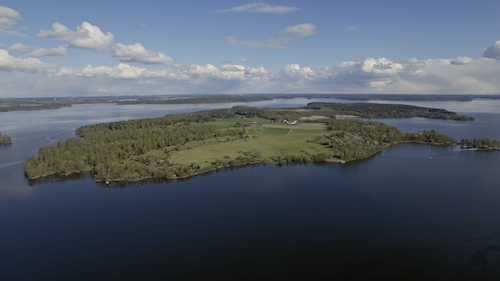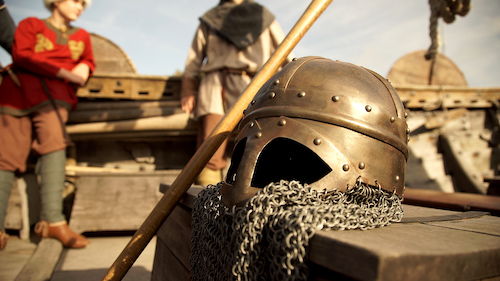Communiqué
Archaeologists examining history-changing DNA in “Viking Warrior Queen” on SECRETS OF THE DEAD, Feb. 22 at 10 pm
< < Back to archaeologists-examining-history-changing-dna-in-viking-warrior-queen-on-secrets-of-the-dead-august-4-at-10-pmJoin a team of archaeologists as they examine one of the most significant Viking graves ever found and test the DNA of the remains of the female warrior buried inside, rewriting our understanding of Viking society.
SECRETS OF THE DEAD : Viking Warrior Queen
Wednesday, February 22 at 10:00 pm
In 1878, archaeologist Hjalmar Stolpe uncovered a grave containing a large number of weapons and the skeletal remains of what seemed to be a great Viking warrior. For a century, people assumed the body was male until the 1970s when Berit Vilkans, a young researcher, observed the bones had female characteristics. In 2017, a team of Swedish geneticists proved through a DNA study that the great warrior wasn’t a man, but a woman. Join this team of experts as they examine the DNA results and complete a field investigation, uncovering the truth about the only archaeological discovery of a female Viking warrior and battle strategist known to date.
Noteworthy Facts

- Nearly 20 miles from Stockholm, Björkö, Sweden, is a small island just two miles long and a half-mile wide. From 750-950 AD, it was home to Birka, one of the most powerful towns in the region and one of the major centers for trade in the Viking world. Today, Birka is the most important archaeological site of the Viking Age, as it is home to 3,000 graves, more than half of which have not been excavated.
- In 1878, Swedish entomologist, archaeologist and ethnographer Hjalmar Stolpe and his team found a grave with two horses buried beneath a large block of granite. The grave was numbered Bj 581: Bj for Björkö and 581 because it was the 581st grave unearthed by the archeologist. Inside the grave, Stolpe’s team found 4o of the 206 bones that make up the human skeleton.
- Bj 581 contained a stockpile of medieval weapons, including a shield, a knife, a bow and arrow, a spear, an axe and a sword, all of which indicated that the grave belonged to a great warrior. Each object was logged, and the bones were placed in bags and stored at the Swedish History Museum.
- In 1975, nearly a century after Stolpe’s great discovery, osteo-archeologist Berit Vilkans took on the task of cataloging the contents of many Viking graves, including the skeletal remains of Bj 581.
- After completing her examination, Vilkans noted the bones belonged to a person of average height, that the forearms were thin and slim, suggesting those of a female and that the remaining pelvic bone was characteristic of a woman, rather than a man.
-

Viking helmet and battle gear on board drakkar warship. Skull bones have certain gender-specific characteristics and could have confirmed Vilkans’ theory but were missing from Bj 581. As a result, in 1975, the identity of the body in Bj 581 remained male in the Swedish History Museum records.
- In 2017, a team of geneticists from Stockholm University took on the difficult task of mapping the DNA genome of Bj 581’s human remains in an attempt to identify the person’s sex. After separating the human skeletal DNA from everything else that remained on the bones after being buried in soil form more than 1,000 years, the scientists were able to examine a small sample of surviving genetic material. The remains contained two X chromosomes, but no Y chromosomes, proving the body was that of a woman.
- Analysis showed that a trained warrior used the weapons found in Bj 581; they were not ceremonial. While wealthy women of this time were often buried with their jewelry, Bj 581 was instead buried with tools of violence and warfare.
- Bj 581 was marked with a granite stone on top that was 8 feet wide, indicating that this was an unquestionably important grave. The grave was also buried with a pouch containing gaming pieces and dice, and by her side, there was a gaming board, all of which are items commonly found in graves of high-ranking military commanders of that era.

